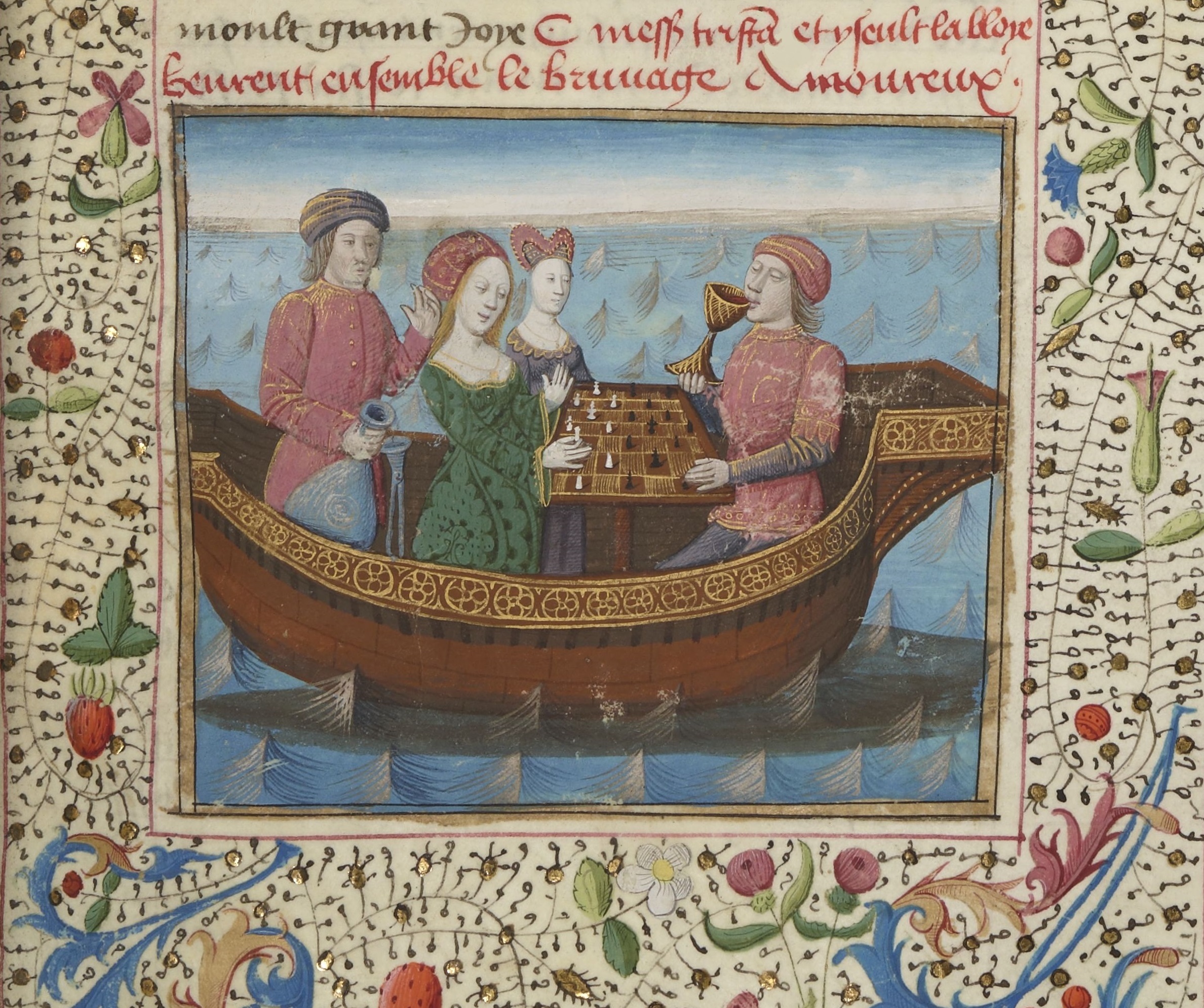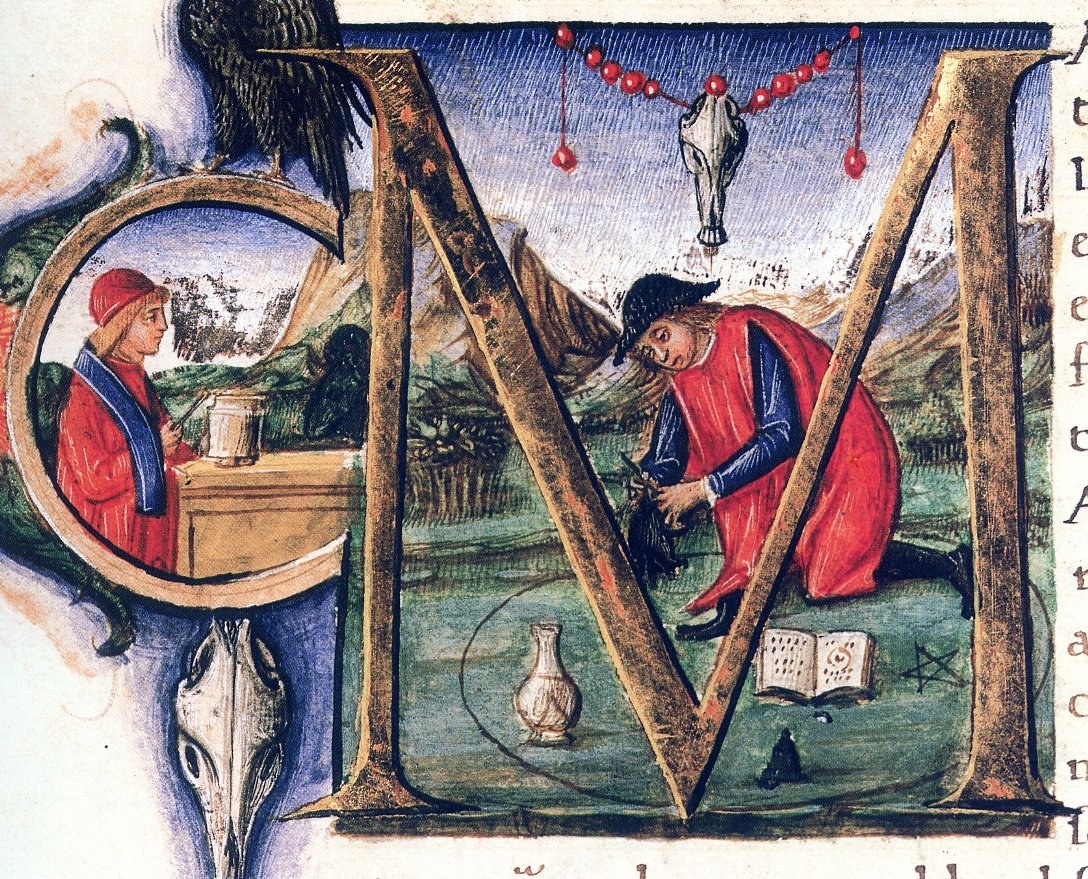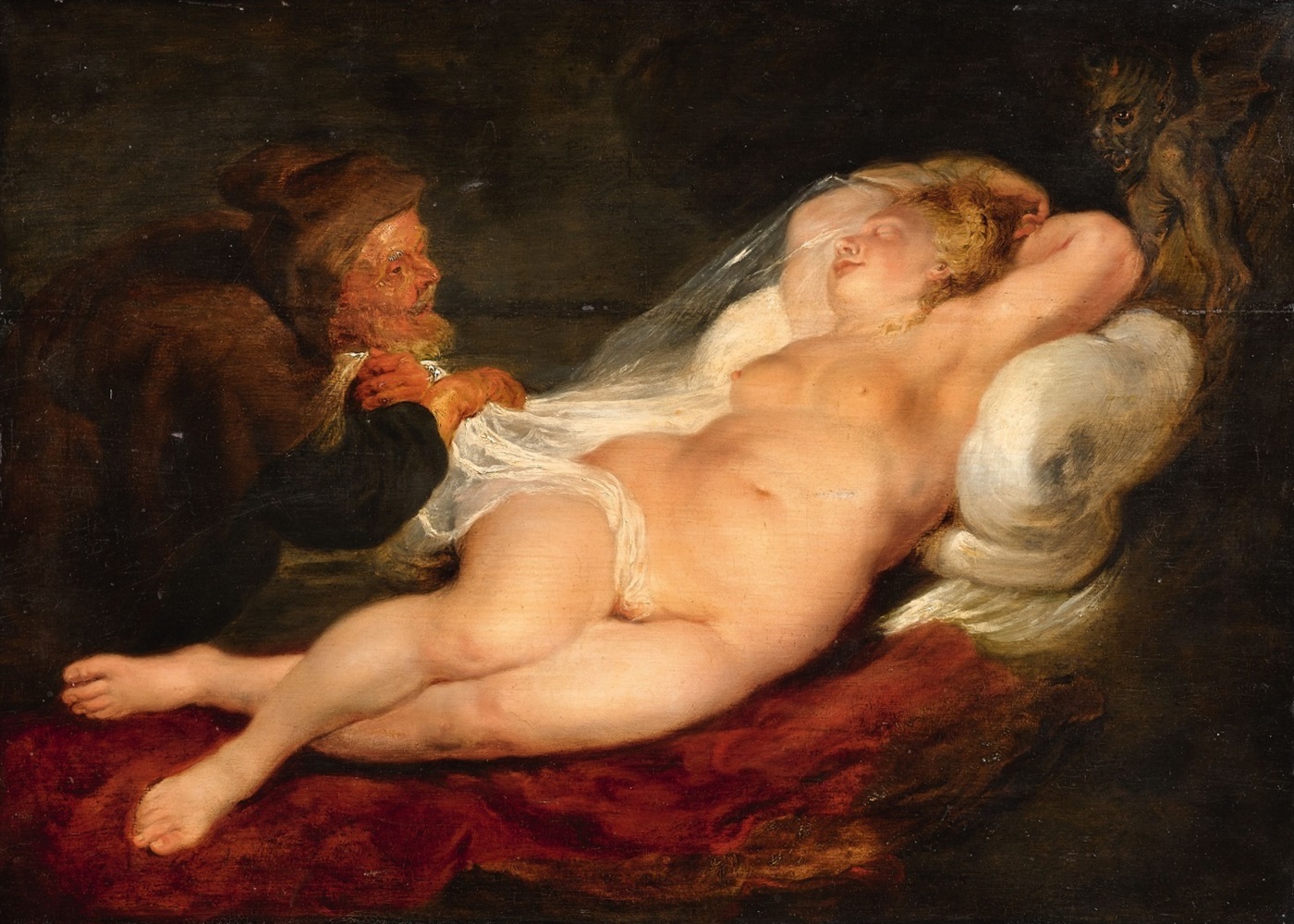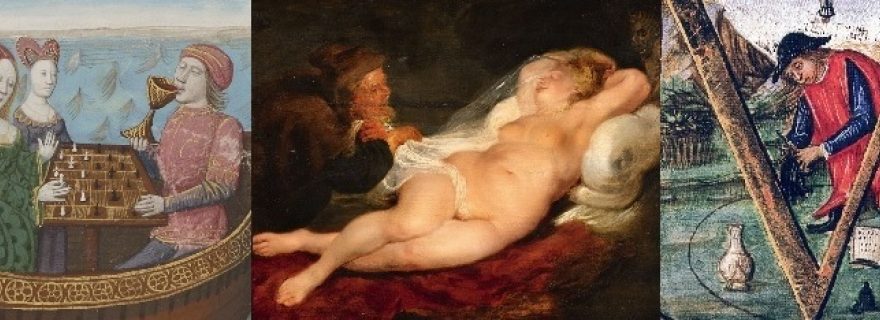Love Magic and Rape Drugs in Late Medieval Italy
Magical practices such as brewing love potions and performing necromantic rituals can be found in medieval literature as well as in books of medicine and theology. But how did they work? And were they really that innocuous?
Fatal love potions
In medieval literature, love magic often takes the shape of a potion. In the famous courtly love tale Tristan and Isolde, the protagonists fall madly in love with each other after drinking a love potion – causing all sorts of problems as Isolde was promised to marry another man. In Italian romance epics like the Orlando Innamorato, there are entire fountains that make those who drink from it fall in love, as well as other fountains that make the drinker despise the person they were infatuated with before.

Tristan and Isolde drinking the love potion (Bibliotheque National de France, Fr. 112, fol. 239r). Via: Wikimedia Commons.
References to love magic can be found outside the area of literature as well, for instance in works of medicine. Some of them involve the wearing of a talisman, made from herbs, gems, stones, or animal parts to which some kind of occult power was attributed. The Italian physician Pietro Bairo mentions a number of magic tricks in his Secreti Medicinali. Carrying a beryl stone, for instance, is said to increase the love between husband and wife, while a magnet may reconcile them, and wearing the heart of a crow will make them support each other. Potions and powders could be made from various substances, ranging from herbs and minerals, to bones, hair, and blood. In one of Pietro Bairo’s tricks, the reader is advised to
“take swallows born in August and put them in a big pan, alive, and bake them until they are shriveled, then make a powder out of it, and when you give this to those who kiss together, it will cause great delight”.
While this last recipe is already unappetizing, other love potions may even be dangerous. The Christian church frowned upon their use, not only because they were superstitious, but also because they might be lethal. Clergymen who took confessions were advised to ask their penitents if they had sinned by using magic. In one manual for taking confession, the Summa Pacifica, it is written that
“giving to eat or drink, or doing something else to a person, not for killing them, but to make them fall in love, but killing them in the process, is homicide and a mortal sin, and should be punished as if they had killed that person voluntarily.”
Demonic love magic
Historians studying medieval magic often make a distinction between “natural magic”, which makes use of natural ingredients like herbs and animal parts, and those types of magic that turn to supernatural powers such as ghosts and demons. Within Italian literature, many examples can be found of characters who use necromancy in order to make people fall in love with them.
In a tale by the Southern Italian novelist Masuccio Salernitano, a young man called Giacomo is madly in in love with a beautiful widow who despises him. He has tried everything to win her over, and even claims that he would gladly summon Satan if that would help him get his way. His friends, wanting to teach him a lesson, hire a charlatan necromancer who sets up an elaborate ceremony so that they may conjure up the demon Barrabas and ask for his help. Giacomo is ordered to bring a black bull, two black capons and a sword that has killed someone. The necromancer then uses the sword to draw a circle “with certain obscure characters”, burns some substance to create a horrible smell and “mutters incantations with strange movements of his head and his mouth, hands and feet”. Despite his former bravado, Giacomo is too scared to finish the ritual and runs away, laughed at by all of his friends.

A necromancer inside a magic circle (Biblioteca Marciana, MS Lat. VI 245). Via: https://www.sciencia.cat/temes/medieval-necromancy-art-controlling-demons
Women might also make use of this demonic magic – especially those who are old and no longer able to seduce men with their own natural beauty. In a scene from Pietro Aretino’s satire I Ragionamenti, an old nun in a cloister, described as so ancient she could be “the Stepmother of the Old Testament”, uses a necromantic ritual to seduce a young man. She uses charcoal to draw stars, moons, squares, rings, and letters on the floor, walks around these figures three times, and conjures the demons by calling out their names. She then uses a kind of voodoo figure made from wax with a hundred pins stuck in it. Having put the figure near the fire, she starts to chant, ordering the spirits to bring her lover to her:
“Oh fire, my fire, kill for me that cruel man who would flee me! Oh my great itch and burning, bring my God of love arunning! Oh Devil, my joy, bring him or else I die without him!”
Before she has even finished her spells, a handsome young man knocks on her door, breathless and panting as if he had been running the whole way, and when the old woman opens the door, he immediately embraces and kisses her.
Rape drugs and free will
Love magic, either through potions or spells, is of course a rather aggressive way of courting or seducing someone. The goal of this magic is to influence the free will of another person, making them do something to which they voluntarily would not have consented. Although Pietro Bairo’s talismans aimed at reconciling married couples are still quite innocuous, for some other types of “love magic”, “rape drugs” might be a more fitting term.
In many manuals for taking confession, sins of this nature are mentioned. During their confession, penitents should be asked if they had given someone else something to eat so that they would “gain their favor” [essere in grazia], “win their love” [per havere lamore daltrui], or could “have their way with them” [per havere lo intento tuo]. While these examples are still somewhat vague about the effects of the drugs that are given to the victim, the Summa Pacifica is a little more specific. In this manual for confession, the priest is advised to interrogate doctors and apothecaries about whether they had given one of their clients advice, or even medicines, to make others fall asleep so that they could have sex with them [usino luxuria con quella persona].
We come across this type of magic in literary sources as well. In the romance epic Orlando Innamorato, the necromancer Malagigi intends to use his magical powers to put the Saracen princess Angelica to sleep and “take his pleasure with her”. In the Orlando Furioso, Angelica is once again the victim of unwanted attention, when she encounters an old hermit in the wilderness. While this hermit at first pretends to want to help her, offering “good, devout words of comfort”, he later starts groping and embracing her. When she resists, he drugs her with a magic potion:
“Out of his pocket the hermit now drew a phial of liquid and lightly sprayed a drop of it onto the maiden’s eyes. The liquid drops put her to sleep: she lay supine on the sand, now a prey to the lustful old lecher. He hugged her and felt at her at his pleasure: she was asleep and could offer no resistance. He planted kisses on her lovely breast and on her lips, there was no one to see him in that wild, deserted spot.”

Angelica and the Hermit. Painting by Peter Paul Rubens, 1626–1628. Via: Wikimedia Commons.
The authors of these romance epics do not condone these practices. Neither the necromancer nor the hermit succeeds in raping Angelica: the first is captured before he is able to carry out his plan, the second is unable to achieve an erection because of his old age. The narrators often defend women, and scold men who want to hurt them. Another author, Baldassare Castigilione, was even more explicit in his rejection of non-consensual sex. One of the characters in his Book of the Courtier, states that those who are in love and “pursue their desires by means of tricks” and “make use of enchantments, charms, force, sleeping potions and other such things” do injury to others. Nor will this type of “forced love” give these men the satisfaction that they desire:
“Love is not to win her body but to conquer the fortress of her mind. And certainly, for my part, if I were in love I would rather wish to know that the lady I served returned my love from her heart and had given me her soul, if I had no other satisfaction, than to enjoy her against her will, for in that case I would think myself the possessor of a lifeless body.”
Translations:
- I Ragionamenti: Raymond Rosenthal (Toronto 2005).
- Orlando Furioso: Guido Waldman (Oxford 2008).
- The Book of the Courtier: George Bull (London 1967).
© Marlisa den Hartog and Leiden Medievalists Blog, 2020. Unauthorised use and/or duplication of this material without express and written permission from this site’s author and/or owner is strictly prohibited. Excerpts and links may be used, provided that full and clear credit is given to Marlisa den Hartog and Leiden Medievalists Blog with appropriate and specific direction to the original content.


